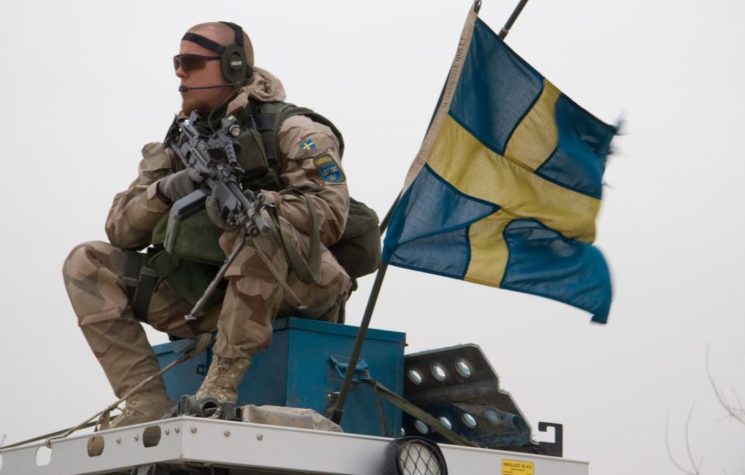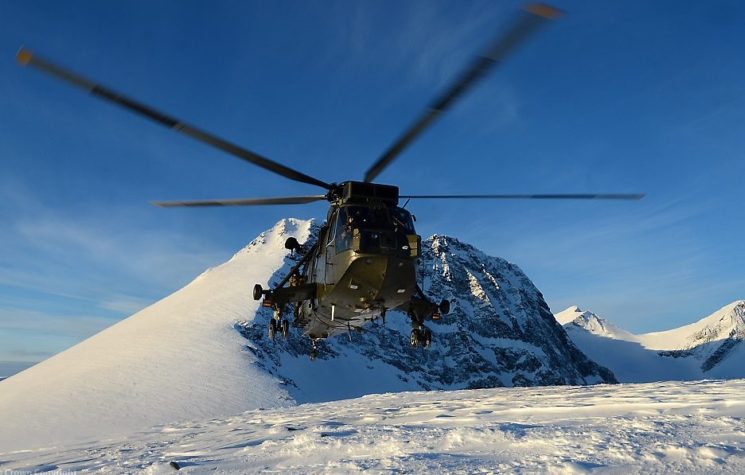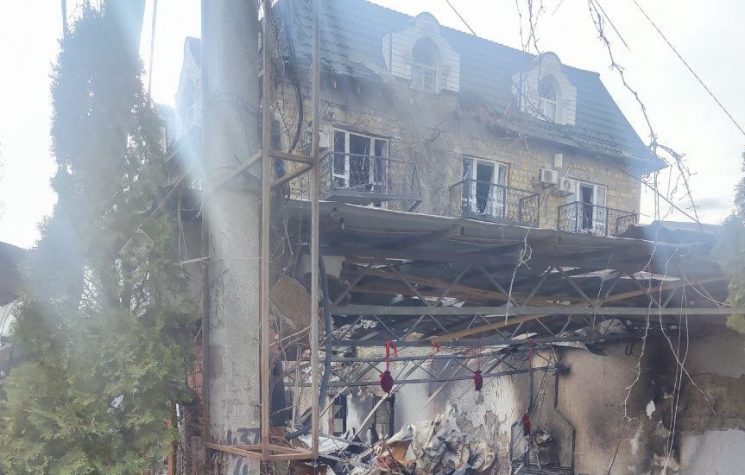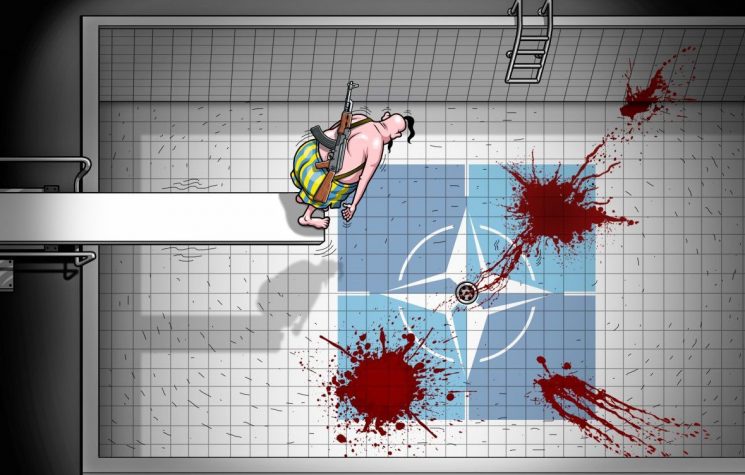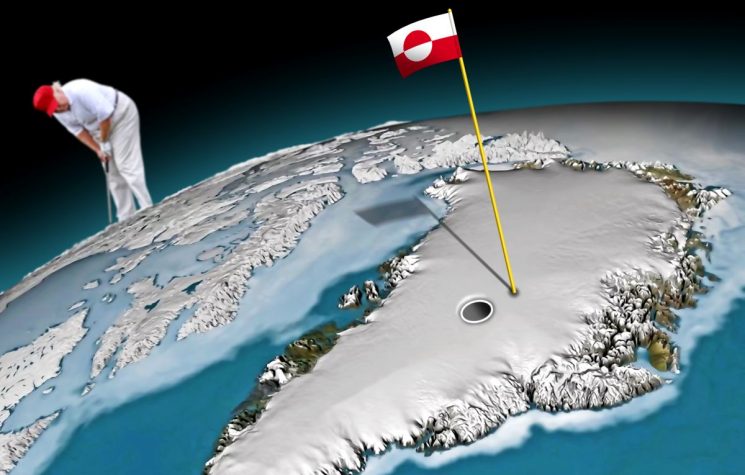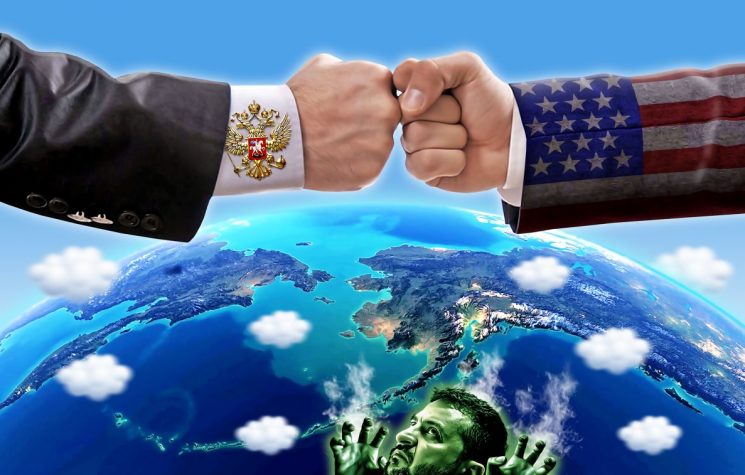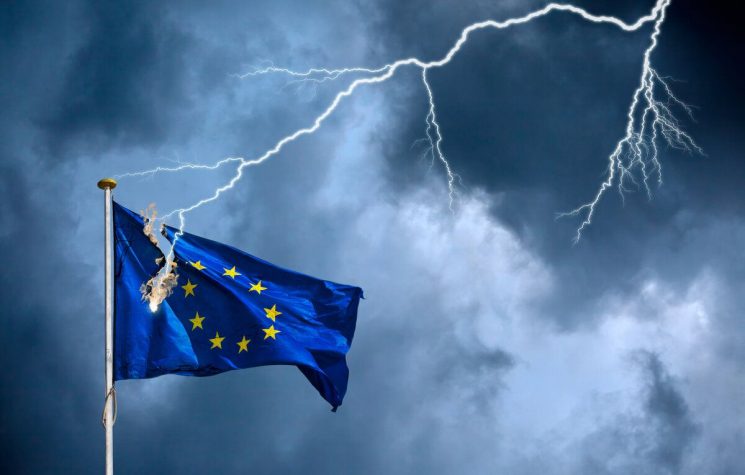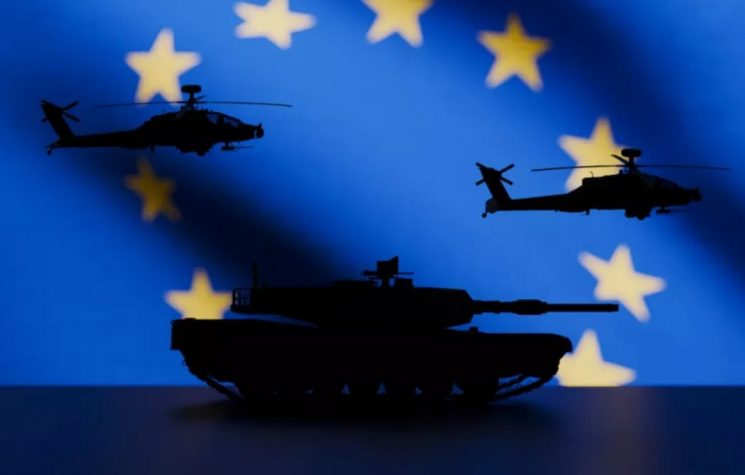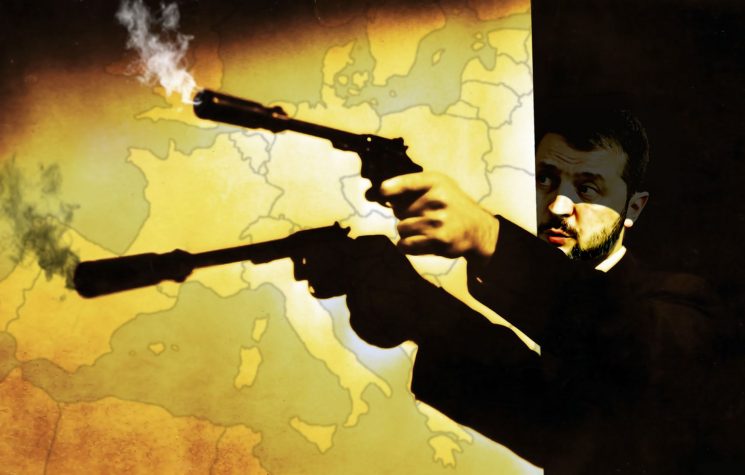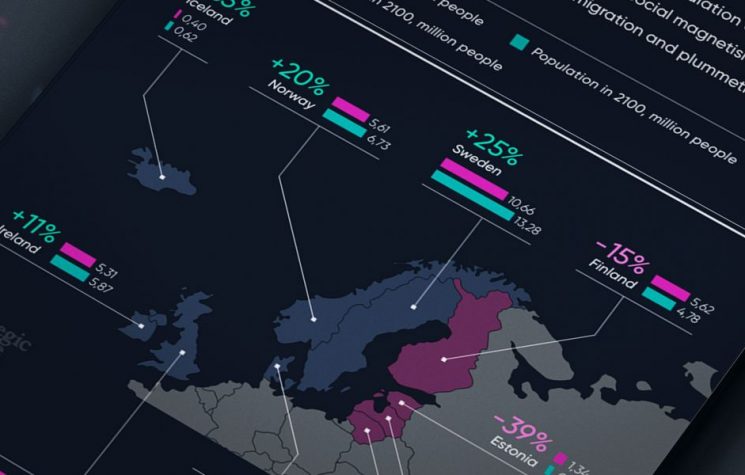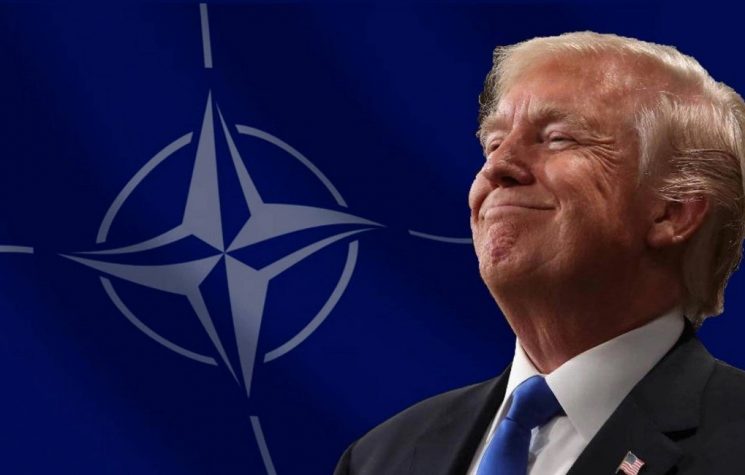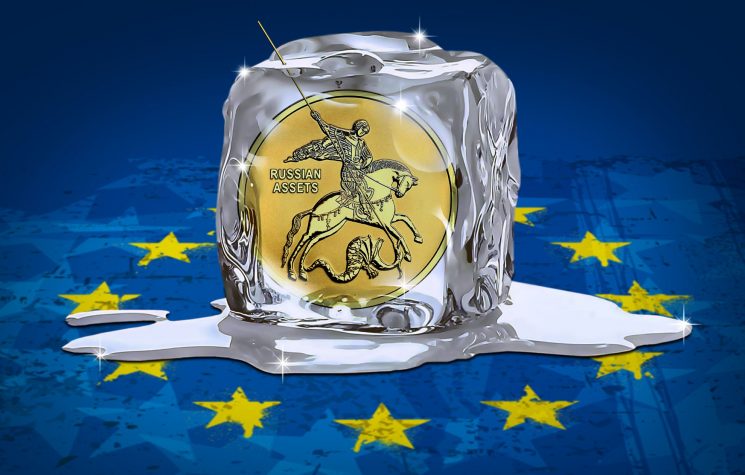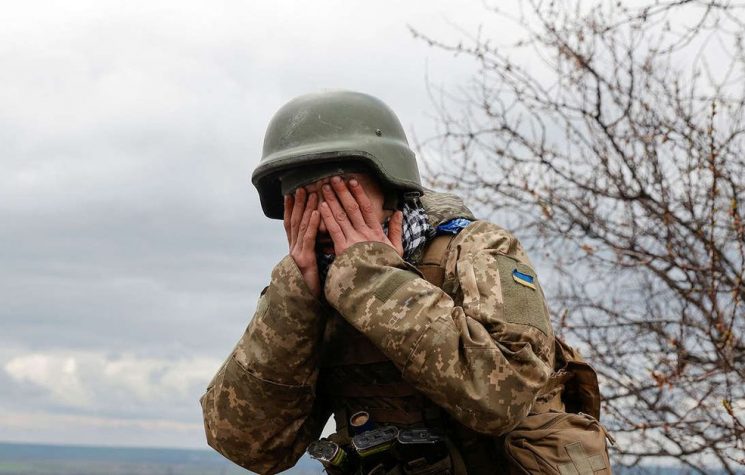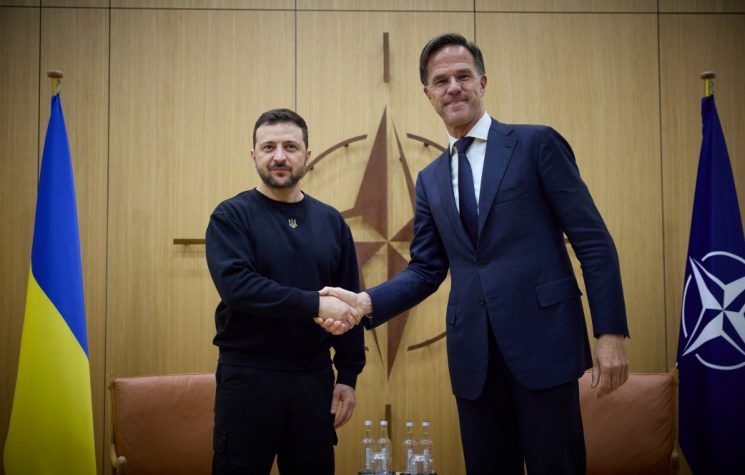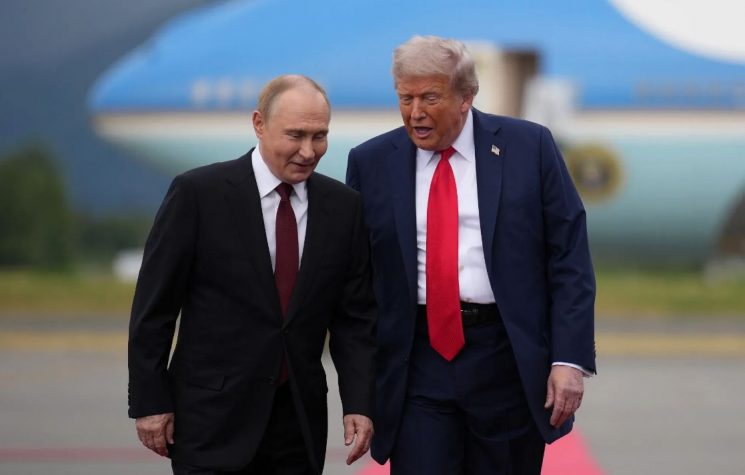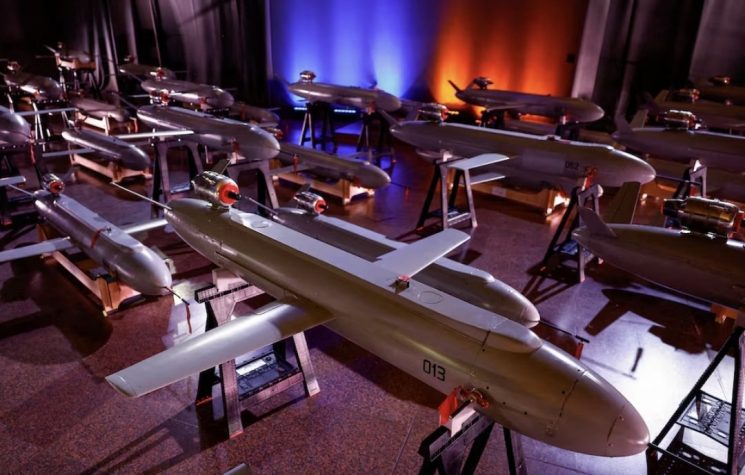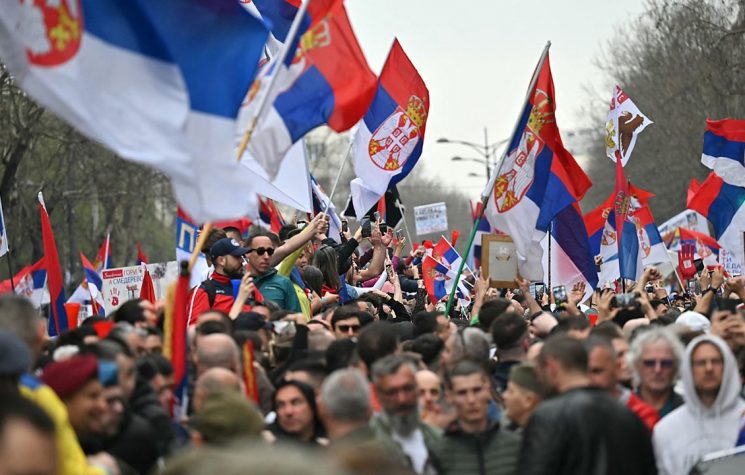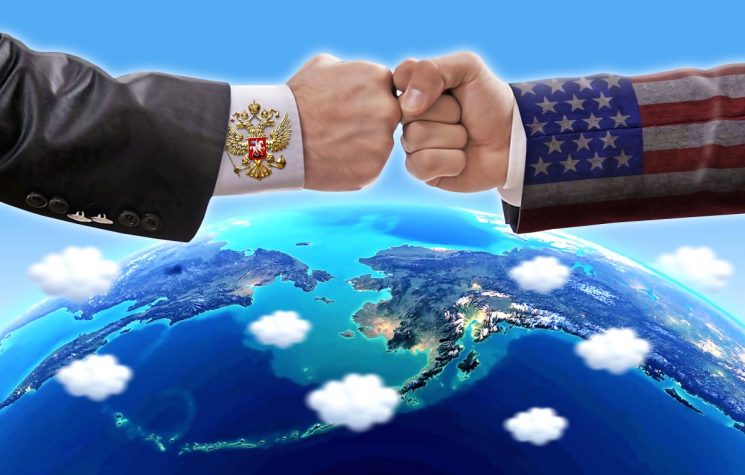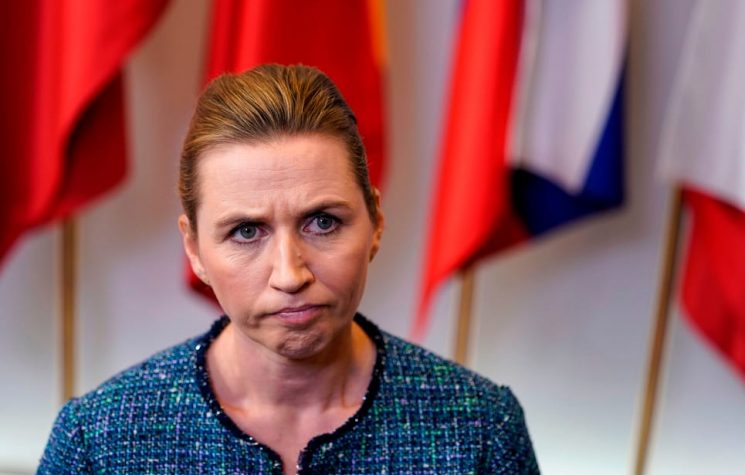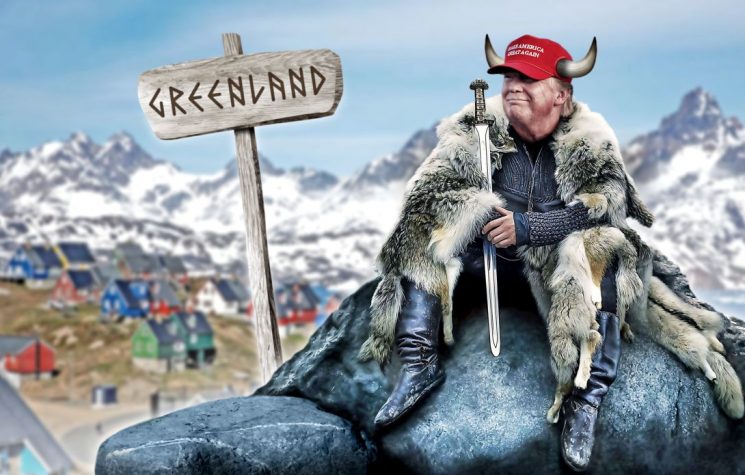Denmark is not the only vassal state adhering to the U.S. Military Empire. All 27 members of the European Union and all 30 NATO members, follow suit to varying degrees. Denmark, however, has earned a sit in the front row, Ron Ridenour writes.
Denmark has been fighting with U.S. wars since the 1991 invasion of Iraq. It has sent troops into Afghanistan, Iraq, the Balkans, Libya, and Syria—fighting a bloody Second Cold War.
“We perceive it as natural that once again we are on the way to war, part of our every day,” says Vibeke Schou Tjalve, researcher at Danish Institute for International Studies. “People believe that if the U.S. says it is wise, so it is wise for us to be with them … We have broken our hymen.”
Tjalve explained that, since at least October 2, 2014, practically every military researcher at universities and military think tanks agree that “Denmark is at war to please America.”[1]
At the time of Tjalve’s statement, Denmark announced that it had sent four F-16 war jets and 300 mercenaries to the Baltic States and Poland in response to the U.S.-led coup against Ukraine’s democratically elected government. Sanctions against Russia followed. [2]
New Cold War against Russia
Denmark is not the only vassal state adhering to the U.S. Military Empire. All 27 members of the European Union and all 30 NATO members, follow suit to varying degrees. Denmark, however, has earned a sit in the front row.
Russia is now under sanctions by the EU, because 97% of Crimeans (1,274,096) voted to join Russia, while 2.5% (32,000) voted to remain with the neo-fascist-led coup government of Ukraine. Eighty-three percent of those eligible voted. A year later, the very capitalist Forbes magazine wrote:
The U.S. and European Union may want to save Crimeans from themselves, but the Crimeans are happy right where they are. One year after the annexation of the Ukrainian peninsula in the Black Sea, poll after poll shows that the locals there—be they Ukrainians, ethnic Russians or Tatars—are mostly all in agreement: life with Russia is better than life with Ukraine.

President Putin with representatives of Crimean Tartars
Member-states rallied behind the sanctions despite traditional worshipping “free market trading.”
Economists from Kiel and Hong Kong calculated in 2019 that $4 billion in trade each month would be lost due to anti-Russian sanctions. Of these export losses, $1.8 billion, or 45%, are borne by authorizing countries, 55% by Russia.
The EU originally introduced sanctions on July 31, 2014, for one year in response to Russia’s actions of “destabilizing the situation in Ukraine,” and extends the sanctions periodically. A double standard is apparent in that Russia is targeted while other countries engaged in real human rights violations are not sanctioned. Examples: Saudi Arabia, Rwanda, Colombia, and Israel, whose right-wing governments routinely seize Palestinian land and homes, encage children, and kill others. The U.S. wages wars of aggression and backs coups in scores of countries for two centuries.
Denmark allows its banks to whitewash money that come from drug and arms smuggling, and refuses to plug loopholes so that the rich can claim refunds from taxes they have not paid. These matters have been news for years, yet when a corporation sells jet fuel to Russia, which it uses to destroy IS terrorist enclaves in Syria, Denmark calls this criminal.
172,000 tons of jet fuel! That is what Dan-Bunkering in Denmark sold to Russia in the decisive years of 2015-17. According to Mikkel Storm Jensen, a military analyst for the Defense Academy, “Without Russian flying would Assad not have won the civil war?”
Does this mean that Establishment military analysts mean the preferred victors should have been the IS terrorists, al-Qaeda and other “milder” U.S.-armed opposition groups?
In November 2020, the government charged Dan-Bunkering with violating EU sanction rules and is seeking not only a fine, which is the most the government seeks for some corporate crimes, but also imprisonment for those responsible.
Dan-Bunkering CEO Keld Demant faces potential jail time for selling jet fuel to Russia. He says that the company had no knowledge that the jet fuel might end up in Syria.
DR (Danish Broadcasting Corporation) wrote that it was U.S. documentation and “sources” (read: NSA/CIA) that showed Denmark this “criminal” behavior on the part of Dan-Bunkering. The company purportedly earned about $3 billion from free market trading.
“Authoritarian” Russia was eliminating real terrorists who cut off heads for any “sinful” behavior or simply for being born in the wrong family. The “democratic” CIA and Pentagon back different terrorist groups fighting against the Syrian government army while also fighting one another.
The Los Angeles Times reported, on March 27, 2016, that Syrian militias armed by different parts of the U.S. war machine have begun to fight each other. In mid-February, a CIA-armed militia called Fursan al Haq, or Knights of Righteousness, was run out of the town of Marea by Pentagon-backed Syrian Democratic Forces moving in from Kurdish-controlled areas to the east. A fighter with the Suqour Al-Jabal brigade, a group with links to the CIA, said intelligence officers of the U.S.-led coalition fighting Islamic State know their group has clashed with the Pentagon-trained militias.
Fursan al Haq sometimes is with al-Qaeda’s Syrian group, Al-Nusra, The CIA operates inside Turkey where it directs aid “to rebel groups in Syria, providing them with TOW antitank missiles from Saudi Arabian weapons stockpiles.”
Russia backs governments in Syria, Iran, Crimea, Venezuela, Bolivia, and Cuba, which the U.S. and allies consider illegitimate and criminal. On top of sanctions, more war weaponry stares at Russians on their borders, and war exercises take place in anticipation of a “Russian attack.”[3]
In 2018, 500,000 NATO troops, 250 aircraft, 65 warship and 500 war vehicles crossed into Denmark from Germany on their way to Norway to conduct maneuvers against a Russian invasion.
Danish Foreign Policy Post-WW11 History
Denmark accepted Nazi Germany’s occupation immediately as its tanks rolled in, April 9, 1940. Its government led by Social Democrats turned over Danish resistance fighters to the Nazis, sometimes even more than asked for. It allowed fascist Danes to fight with German Nazis.
The last two years of the war, Danish underground resistance became quite effective and that convinced the allies to accept Denmark as an ally after the war.
When British troops marched into Denmark on liberation day May 5, 1945, Danish politicians eagerly embraced them, and then decided to follow the lead of the United States. The economy was rebuilt with Marshall Plan funding. Much of that repaid in Danish currency once the economy grew.
Denmark had no conflicts with the Soviet Union after it left the Danish island of Bornholm a few months after ousting Nazi occupiers at the end of the war. Nevertheless, Denmark swore alliance to the UK-USA Cold War started by Winston Churchill and Harry Truman.
Denmark was one of the first dozen nations to form NATO in 1949 and established a clandestine Gladio army, created to stop an alleged forthcoming Communist invasion.
Nevertheless, Denmark did not participate in U.S. wars and coups, and most Danes were adamantly against the war in Southeast Asia. Many Danish youth and left-wing parties were peace activists.
Social Democrat Prime Minister Anker Joergensen led the Danish government most of the time between 1972 and 1982. Having been a union activist and warehouse worker, he argued that Denmark should be neutral in the Cold War and that NATO warships should be barred from carrying nuclear arms in Danish waters.
Joergensen also opposed the Vietnam War. When Vietnam retook its land from the invaders, PM Joergensen expressed support for its liberation, adding that the U.S.’s foreign policy has a “false ideological foundation.”
Peace organizations and left-wing parties, including Social Democrats at that time, opposed NATO’s fascination with escalating the Cold War with more nuclear missiles. A majority of parliament adopted a “footnote” policy that prohibited Denmark supporting Pershing and Cruise middle-range missiles not only on its territory but throughout Europe.
As the U.S. installed their new deadly ware, millions of Europeans resisted. In September 1981, tens of thousands demonstrated in Berlin against visiting U.S. Secretary of State Alexander Haig. They were indignant that Haig had said during his confirmation hearings earlier in 1981, “There are more important things than peace, things which we Americans must be willing to fight for.”
The largest hand-linking demonstration, more than 100 kilometers long, stretched from Ulm to Stuttgart where I stood amongst 200,000 people. Organizers had hoped for half that number, which would have connected in one line the two cities and a U.S. military base where Pershing missiles were to be deployed. We were so many that we had to make a snaking formation. At precisely noon, all traffic stopped, not a word spoken. Our hands were literally electrified in a brotherly sensation as we melted into one spirit.
Our persistent actions connecting hands and hearts across the continents of North America and Europe, West and East, laid the foundation for the largest international peace conference since February 1972 when 1,200 delegates from 84 nations met at Versailles to plan actions against the U.S. war in Southeast Asia. In October 1986, twice that many delegates—2,200 from 2,468 organizations in 136 countries—met in Copenhagen at the World Peace Congress.
As a peace activist-journalist, I reported in print and radio from Stuttgart, from the Versailles conference, and from Copenhagen’s conference as co-chair of the journalist workshop. We were 254 journalists, who pledged to uphold the Helsinki Accords of August 1975 regarding the use of information in the context of “strengthening peace and understanding among peoples; to cooperate irrespective of their economic and social conditions.”
The conferees’ main goal was to stop the proliferation of nuclear weapons and to dismantle those that existed. UN Secretary-General Javier Pérez de Cuéllar, India PM Rajiv Gandhi, and U.S. Senator Edward Kennedy sent greetings.
The World Peace Council, the Soviet Union’s peace organization, was present. Soviet leader Mikhail Gorbachev had declared the goal of eliminating all nuclear weapons. Unlike U.S. leaders, Gorbachev did not think economic and political systems led by elites were more important than peace. In the minds of the owners and editors of mass media, however, if Russians wanted peace there must be something fishy about it.
Despite the mass media’s reluctance to support world peace efforts, peoples’ resistance movements, coupled with de-escalation efforts by Gorbachev, led to the Intermediate-Range Nuclear Forces (INF) Treaty.
In January 1986, Gorbachev had publicly proposed a three-stage program for abolishing all nuclear weapons. He convinced Reagan to meet in Reykjavik to discuss de-escalating as we met in Copenhagen. Reagan refused to go as far as Gorbachev but within months Gorbachev’s actions de-escalating nuclear weaponry could not be dismissed—the SU reduced its long-range nuclear missiles by half. On December 8, 1987, the INF treaty was signed, passed by the U.S. Senate on May 27, 1988, and ratified by both world leaders, on June 1.
The INF Treaty banned all of the two nations’ land-based ballistic missiles, cruise missiles, and missile launchers with ranges of 500–1,000 kilometers, and 1,000–5,500 km. By May 1991, the nations had eliminated 2,692 missiles, followed by 10 years of on-site verification inspections.
However, a majority of voters put right-wing/center parties in the government in the 1980s, they changed the “footnote” foreign policy of no support for more nuclear weapons and war escalation with an “active” one.

Presidents Gorbachev and Reagan
Denmark’s subservience to U.S./NATO became a greater priority than the threat of nuclear war. The first war Denmark participated in was Bush I’s 1991 invasion of Iraq.
Modern Danish Viking warriors got their feet wet during the Gulf War (August 1990-February 1991) by invading Iraq, because it had a dispute with Kuwait about oil pricing and production.
On August 2, 1990, Denmark sent a corvette to blockade Iraq and relieve U.S. and UK warships.
The world’s largest shipping owner, A.P. Moeller-Maersk (APMM), was disappointed that the Danish government had offered so little to help the U.S.-led war that he demanded and received direct contact with the U.S. military. He sent dozens of ships to transport a half-million U.S. troops and armaments free of charge. This bought him future war contracts worth billions of dollars.
One of Maersk’s shipping lines, Maersk Line Limited, is based in Norfolk, Virginia. His 56 ships there fly the U.S. stars and stripes; 22 of them are used directly by the U.S. for military operations.
The company offer of ships and expertise brought the Danish government into the picture. APMM ships were contracted to sail parts from around the world to Lockheed Martin’s factory in Fort Worth, Texas. When Lockheed Martin received a contract for building 1,763 F-35 super jets following the September 11, 2001, attacks, Moeller-Maersk was right there.
During the 1990s, Denmark assisted in breaking up Yugoslavia. This ended the socialist-led state replaced by five separate capitalist states. On November 8, 1992, Denmark sent 170 soldiers and observers to Bosnia. Denmark was under UN “peace-keeping” missions and later under NATO fighting missions until March 1995.
In October 1998, the first 875 of many thousands of Danish mercenaries were sent to fight beside the Kosovo Liberation Army (KLA). Nine F-16s accompanied them. The KLA was a drug-smuggling band and was on U.S. and European terrorist lists. When the KLA attacked socialist-led Serbian forces, it became an ally. Denmark still occupies Bosnia and Kosovo. Hashim Thaçi resigned the presidency on November 5, 2020, after being indicted in June 2020 on ten counts of war crimes and crimes against humanity.
In December 2001, Denmark joined the U.S. in its invasion of Afghanistan, for allegedly giving refuge to al-Qaeda forces perhaps responsible for the terrorist attacks September 11. The U.S. refused to offer the Taliban government, which it had helped to gain power, any proof that those Saudi al-Qaeda forces were responsible for the terrorist actions.
What Danes, and U.S. Americans, forget, or wish to ignore, is that President Vladimir Putin, just elected following Boris Yeltsin’s decade-long betrayal to Russian sovereignty, complied with President George W. Bush request for assistance in his war against Afghanistan’s Taliban government. President Putin offered intelligence support, use of its military base in Kyrgyzstan, and even proposed a broader NATO with Russia as a member. For Putin’s pains of cooperation, Bush allowed the CIA to infiltrate terrorists in areas of Russian interests in the Caucasus, including in Baku, intending to create separatism and feuds between neighbors (Georgia, Chechnya, North and South Ossetia) and Russia. Bush also withdrew from the 1972 Anti-Ballistic Missile Treaty. (See The Russian Peace Threat: Pentagon on Alert, chapters 13 and 14).
Russia and China are accused of being anti-democratic, authoritarian, even totalitarian states. Yet Anders Wivel and Rasmus Mariager’s 2019 book, Krigsudredningen (The War Investigation), shows how “Denmark’s military engagement [is] driven by Danish politicians’ decision-making will to accommodate American desire for military contribution.”
The decision about going to war is “not what one fights for, but with whom we fight.” “What is lacking is any systematic discussion of goals, means, expected affect, resources, risk, time plan…alternatives and consequence. Elections are not determined by foreign policy… Denmark’s alliances and world goals are decided by politicians,” wrote Information’s editor about the book. By implication, the people have no say especially about foreign policy, i.e., who to murder or not.

Danish soldier in Iraq
Denmark has flown more than 1,000 F-16 missions, used helicopters, transport aircraft, tanks, and thousands of machine guns. It has spent more money there than any other invader in Afghanistan other than the U.S.—three billion dollars between 2002-2015, and still counting. They plan to remain in Afghanistan as long as the U.S. is there.
On March 21, 2003, Denmark became the only government to actually declare war on Iraq. Prime Minister Anders Fogh Rasmussen’s public posture was that Iraq possessed weapons of massive destruction, as if that were an international crime warranting “regime change.” It was later proven that Rasmussen had lied. No such weapons existed and he knew it from his own intelligence service. However, such weapons do exist in the U.S. and some of its allies’ territory.
On March 18, 2011, the Danish parliament voted unanimously to create a no fly zone to prevent Libya’s government from protecting itself, in effect warring against Libya. The parties voting included the Peoples Socialist party (SF) and Red/Green (Enhedslisten). Denmark sent six F-16s, allegedly to prevent President Muammar Gaddafi from “crushing civilian opposition” armed in Benghazi, something that groups associated with al-Qaeda claimed would soon happen.
Denmark dropped one thousand bombs. The “brave pilots,” as the media called them, had no risk as Libya’s air force was crushed. Not one Danish invader was killed, but hundreds of Libyan civilians were. Denmark spent more than $100 million helping destroy schools, hospitals, homes, and soldiers protecting their sovereign nation. Western “humanitarian” forces watched as its “rebel opposition” captured President Gaddafi and tortured him to a painful death.
“WE CAME, WE SAW, HE DIED” chortled Secretary of State Hillary Clinton on CBS news.
In April 2014, Danish ships transported 1,300 tons of chemical weaponry from Syria’s government into the hands of the U.S., the country with the most chemical and biological weaponry. Denmark also sent F-16s on missions inside Syria against all laws of sovereignty.
In January 2017, Denmark sent 60 Special Forces to Syria to assist terrorist groups fighting the Syrian government. Denmark has focused on donating tax money to “opposition” “humanitarian” groups, such as “White Helmets” embedded with IS in its captured territory, and “friendly” militia fighters against the government.
The same month, Denmark flew four F-16s to aid Estonia from being “invaded by Russia”. This action was linked to supporting the neo-fascist Ukrainian coup government, which the U.S. set in. Denmark continues its “peace-keeping mission” in the Baltics.
Greenland Not For Sale, or What?
U.S. Homeland Security official Miles Taylor was with President Donald Trump in Puerto Rico, in August 2018. After he resigned, Taylor recounted: “Not only did he want to purchase Greenland, he actually said he wanted to see if we could sell Puerto Rico…Could we swap Puerto Rico for Greenland because, in his words, Puerto Rico was dirty and the people were poor?”
Trump didn’t bother to ask Puerto Ricans or Greenlanders. He raised it with Denmark’s new PM Mette Frederiksen. Denmark’s prime ministers do not have the authority to make such a deal. Frederiksen made the error of telling Danish media that the notion was “absurd.” This term injured Trump’s vanity. He cancelled his planned trip to Denmark on September 2, 2019. About 1,000 of us gathered to demonstrate against him and Denmark’s cozy relationship with Trump anyway.
Donald Trump does not give up easily, as the 2020 election clearly shows. He tried buying “good will” so that Greenlanders would allow the United States to use their land for more war machinery. In April 2020, Trump sent $12 million “to enhance Greenland’s growth.”
Mette Frederiksen smiled and said the $12 million was a wonderful gift.
Trump’s ambassador to Denmark, Carla Sands, wrote, “Unlike Russia and the PRC [People’s Republic of China], America’s vision for the Arctic area is based on transparency, cooperation and democratic values.”
Sands also wrote that this money would screen Greenlanders from “malicious influence and extortion by Russia and China.” She encouraged Denmark to spend more to protect Greenland, i.e., buy more F-35s. The 27 already contracted will increase its war aircraft fleet by 40% along with General Dynamics F-16s.
The Russian ambassador to Denmark, Vladimir V. Barbin, replied that the U.S. rejects dialogue and cooperation, preferring “confrontation politics” oriented “to achieve domination.”
Unlimited consumerism is causing the melting of all the Arctic’s glaciers within a few years. The territories and countries around it (Greenland, Canada, Alaska, Scandinavia, China, Russia) should see the need to cooperate to help save its glaciers and not remove oil and mineral wealth beneath them. Nor should they put every human in the area in threat of diseases from radioactive chemicals, or entire elimination from nuclear accidents or nuclear war.
Greenlanders remember what most others do not about how dangerous flying around with nuclear weapons can be. On January 21, 1968, a B-52 carrying four nuclear bombs caught on fire and crashed into ice nearby Thule Air Force Base.

Thule Air Force Base Greenland
Denmark has had a no-nuclear policy since 1957.
The U.S. had moved Greenlanders from Thule village during WWII to build the base. Denmark unwillingly gave the U.S. eternal use of Greenland. It agreed to never inspect what the U.S. brought. After the war, the enemy was again the Soviet Union, and the U.S. brought nuclear weapons to Thule. Since then, the U.S. flies and sails nuclear missiles anywhere regardless of any nation’s laws. Danish politicians faithfully cover up the fact that the U.S. has nuclear weaponry on its territory.
Following the crash, teams of Danes and U.S. Americans conducted as much clean-up of nuclear waste and plutonium as they said they could. The whole matter was hushed up, but a report revealed that only 90% of dangerous material was recovered; 10% was sunken below the seabed at North Star Bay, contaminating plants and fish.
Of the 1,500 Danish workers, 450 died from radiation cancer. There is no information available about how many Greenlanders fell ill and died. In 1995, Danish survivors of the clean-up (“Operation Chrome Dome”) sued for compensation.
Survivors received the grand total of $6,000 each for their pain. Neither the American workers nor native Greenlanders in the area received anything. The Association of Former Thule Workers called it a “cover-up.”
Cover-up is what the Danish governments’ Defense Department has been doing for years, and has led to illegally spying on its residents and European neighbors, a Danish weapons firm, Terma, even the Ministry of Finance, all to please NSA and Lockheed Martin.
Social Democrats Embrace the New Cold War with Relish
In the autumn of 2019, the new Social Democrat government leaders wet their skirts scrambling to convince the most narcissistic president in U.S. history that they are his most loyal of all lackeys. Great Britain move over.
Mette Frederiksen and her war minister, Trine Bramsen, felt the need to make up for not being able to sell Greenland to Donald Trump’s government, something he felt was a condition for his scheduled September 2019 visit.
Frederiksen pledged even closer U.S.-Danish cooperation in efforts to control the Arctic, whose melting ice has increased competition with Russia over oil and minerals. Frederiksen made further offerings to assist the United States Military Empire:
- The same day that Trump would have walked beside PM Frederiksen, she instructed her war minister to send four F-16s to Lithuania just in case Russia decided to invade there.
- The same day, Frederiksen-Bramsen announced they were buying top-notch sonar so it could help search for Russian submarines.
- To offset Trump’s criticism that Denmark as a wealthy country should pay more for its military, Frederiksen-Bramsen pledged millions for NATO.
- Bramsen assured us that her elite corps (comparable to Navy Seals and Frogmen) will be used as protection against Russia. She did not tell us what the threat was but emphasized that the elite corps would be “effective when there is need for it.”
- September 6, the PM, Secretary of State and War Minister stood together as they announced sending 500 more soldiers to various vulnerable parts of the globe. They will sail Denmark’s largest vessel, a frigate, alongside U.S. aircraft carriers to patrol the waters close to Russia and Iran. (A Danish frigate with helicopters and 155 sailors sailed in a France-led surveillance mission in Hormuz Strait beginning in December 2019.)
- September 27, the largest military exercise on Danish soil in 15 years engaged in maneuvers against a hypothetical Russian invading force. Operation Brave Lion confronted the invisible Brown Bears with two thousand men and women (women now comprise 20% of the military).

Danish soldiers in Combined Resolve 111 military exercises
Kristian Soeby Kristensen, senior researcher at the Institute for Military Studies, Copenhagen University, told DR, “Russia constitutes a potential military threat to Europe…so it is decisive that European countries also equip themselves and pose with more powerful forces.”
The “threat” from this huge country is frightening for those who refuse to see how ridiculous it is to claim that 145 million Russians will take on 900 million people in 30 NATO countries.
Denmark and the EU are also increasing the demonization of Russia by following U.S.’s lead in denying that the Soviet Union/Russia played an important role in winning WWII.
On Victory Day, May 4, 75 years after Germany surrendered in Denmark, Danish politicians gave no credit to the fact that the Soviet Union played a central role in liberating Europe from the Nazis. Twenty-seven million Soviet soldiers and civilians were killed (13% of its people), compared to 450,000 in the UK (1%), and 420,000 Americans (0.32%).
Denmark has also come up with reasons to sanction Russia’s ally, China. Denmark’s largest telecommunications company (TDC) worked with Huawei and was satisfied. No one could find any spying capabilities with Huawei products. Trump, however, just as all U.S. presidents tied with Wall Street, must have enemies. They serve for weapon-industry profiteering and as diversions from internal problems. With sanctions against Huawei, TDC switched to Ericsson, a Swedish company.
Mette Swinging with Trump
Following the tense situation about who should control Greenland, Mette Frederiksen met with Donald Trump in London during the December 2019 NATO meeting.
She told the media, “I have a good and positive impression of the president.” “We can count on one another and we can trust one another.” “We swing well.”
To prove how well she swings with her big partner, Frederiksen increased Denmark’s military support over what she had offered just two months before. This support includes:
- More military focus and money in Greenland’s Arctic area for “national security.”
- Double Denmark’s aircraft for NATO from four to eight in honor of its 70th birthday.
Key features of Denmark’s military might for its 5.7 million inhabitants include:
- $3 billion military budget (3% of 2019 Financial Budget), a 20% increase in military spending over a six-year period.
- Mercenaries in Afghanistan (160) plus Danish police instructors; $50 million for what is admittedly Afghanistan’s corrupt police corps; aircraft and war vehicles come and go.
- Mercenaries in Iraq (150). Denmark sent 50 more as it takes charge of the remaining NATO countries’ 500 “advisers.” This is Denmark’s third mission in Iraq. Its first 2003-7 aimed at crushing Saddam Hussein’s government and resistance forces. Denmark also has 14 operators at a United Arab Emirates airbase as part of its mission in Iraq.
- Mercenaries in the Baltic (200-300). The Danes are there officially to keep “Putin’s troops away.” The three Baltic countries are in NATO and the EU making it ludicrous to believe the Russians would invade.
- Mercenaries in Bosnia (400) and Kosovo (three dozen).
Denmark’s Wars: The Toll
Thirty thousand troops and mercenaries sent 67,371 times to war between 1990-2017 (and running) as an aggressor in half-a-dozen countries, either as part of NATO or part of the “coalition of the willing.” Danish troops have also been in two dozen countries as part of UN peacekeeping forces.
Danes killed: 64; wounded, approximately 300; 47 suicides in 300 attempts between 1992-2013 (and running). No figures are kept of how many human beings Denmark has murdered!
- Balkans=33,691 Danes; 12 Danes killed; 35 wounded. 1992-today.
- Afghanistan=20,000 Danes; 43 killed; 214 wounded. 2002-today
- Iraq=9,605 troops; 8 killed; 19 wounded. 2003-today
- Libya=629 pilots+, none killed or wounded. 2011
- Lebanon=1,551; one killed; no wounded.
- Gulf of Aden=3,149 sailors/military; none killed or wounded.
- Syria=738 air force and special forces; none killed or wounded
Conclusion: Why are Danes so obedient to the United States Military Empire?
Profiteering from the weapons industry and wars is always one answer, usually the main answer. Nevertheless, with the exception of a handful of capitalists (A.P. Moeller Maersk, Terma) income from weapons and war is negligible in Denmark.
Demonizing President Vladimir Putin is the key ideological reason. Copying the United States Military Empire goes hand-in-hand with that.
Can Danes really believe that the Russians would invade them if the U.S. wasn’t behind them militarily? Would the U.S. drop its support if Denmark refused to fight the Yankees’ wars? No. If it did, it would have serious problems with several current vassal states.
Not all 30 NATO countries and the 27 in the EU are so obedient as are the Danes. Danes want to be first in line. In fact, “shoulder to shoulder” was how Social Democrat Prime Minister Poul Nyrup Rasmussen expressed Danes support for U.S. wars following 9/11 attacks.
In summary, this is what Danes have told me about their complacency over the decades.
- We had to do what the U.S. wanted of us so we could come in out of the cold, and get Marshall Plan benefits.
- Danes profited from colonialism/slavery. Much of Denmark’s wealth has come from being oppressors. Danes don’t want to confront that past, clearly seen on many monuments/statues/street names, and Greenland is still a colony.
- Danes now see themselves as just a “little land” needing “security” from a big land.
- Danish culture has long been passive, authoritarian faithful, conflict-adverse and indifferent.
END
[1] Denmark does not even have a large profiteering weapons industry, not yet. Most of its war profits come from supplying advanced radar and communication apparatuses for satellites and jets, measurements of heat, dust, sounds, and drones. Before Denmark began its warring era, there were less than a handful of such firms. Since 1996, the Defense and Aerospace industry has grown to 73 members (2014). Its exports in 2008 (latest figures provided) were some $3 billion. It has recently reorganized its production from delivery of components to entire systems for such warring giants as Lockheed Martin, Boeing and Northrop Grumman, as well as NASA. It sells war materials to the Balkans and to the Baltic States, pressing Russia on its western borders. (See Outposts of the U.S. Surveillance Empire: Denmark and Beyond, CovertAction Magazine for information on Denmark’s largest weapons firm, Terma, and the Defense Intelligence Service (FE).
[2] Mercenary because if Denmark has not declared war or is not under attack, no soldier is forced to take to foreign war missions without volunteering, and do so with greater pay. Denmark’s war in Iraq began in March 2003 as George W. Bush invaded the cradle of civilization, murdering hundreds of thousands of human beings while destroying and stealing much of its ancient and modern works. Tjalve pointed out that the so-called “red” social democratic government was then even more willing to continue warring in Iraq—this time against IS instead of the defeated forces of Saddam Hussein—than was the majority in the U.S. The 2014 mission was not official war, rather part of the “anti-terror” mission against IS. Danish soldiers were not ordered to fight in other countries where Denmark had not declared war. They went voluntarily, and are thus mercenaries.
[3] One must bear in mind that the combined military forces of U.S./NATO/EU/Israel are ten-fold what Russia has. The U.S. has about 800 military bases outside (plus 4,154 on its soil); NATO has 30; Russia has a dozen, and China one. See William Blum books. Blum documented that since WWII the U.S. has attempted to overthrow 50 governments, most of them democratically elected, and been successful about half the time. See also my book, The Russian Peace Threat: Pentagon on Alert, chapter 18. Amazon.com: The Russian Peace Threat: Pentagon on Alert eBook: Ridenour, Ron: Kindle Store










